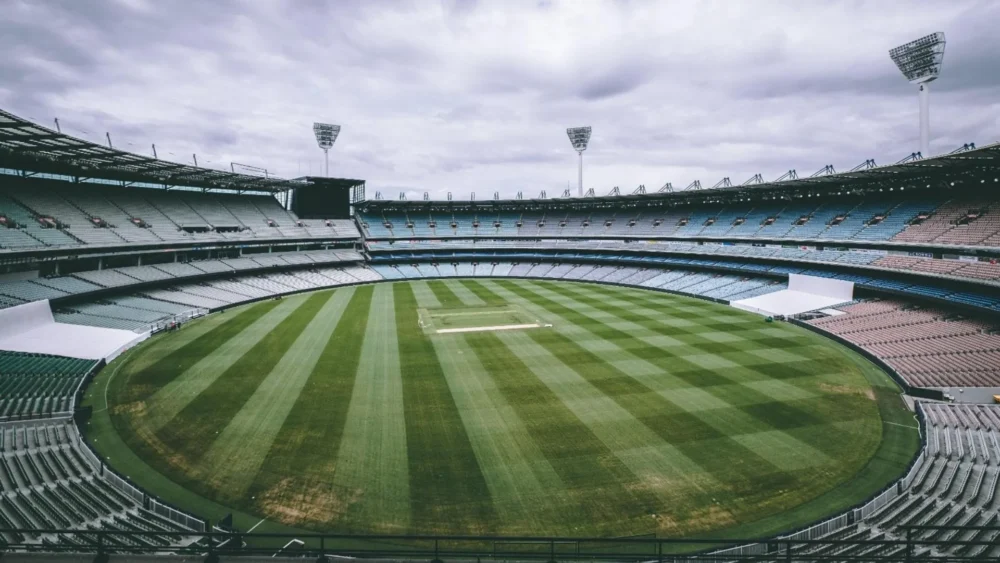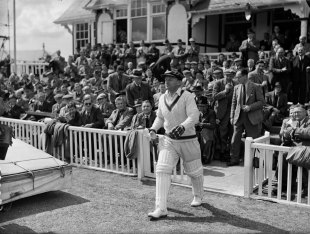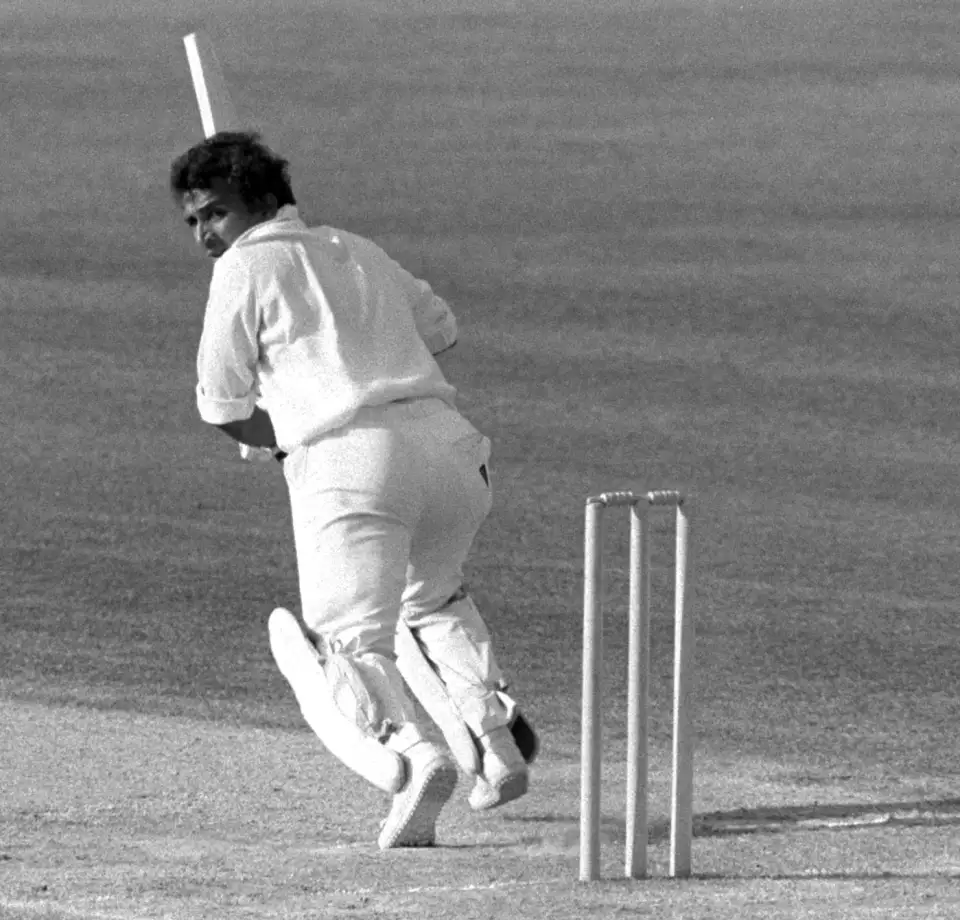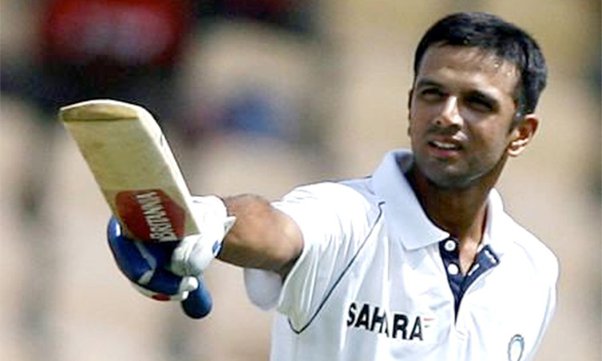Cricket Ground Area In Square Feet

Cricket, often regarded as a gentleman’s game, is not only about the skills of the players but also about the dimensions of the playing field. The size of a cricket ground is crucial in determining the dynamics of the game, influencing strategies, scoring patterns, and overall gameplay. In this article, we delve into the dimensions of a standard cricket ground and explore the area in square feet.
1. Dimensions of a Cricket Ground:
A standard cricket ground typically comprises several key elements, including the playing area, the pitch, the boundary ropes, and the surrounding infrastructure. The dimensions of these components vary depending on factors such as the level of play, international regulations, and local conditions.
– Playing Area: The central portion of the cricket ground, known as the playing area, is where the action unfolds. It consists of the pitch, where the bowler delivers the ball to the batsman, and the surrounding field where fielders position themselves. The dimensions of the playing area are regulated by the Laws of Cricket and vary for different formats of the game.
– Pitch: The pitch is the rectangular strip of specially prepared turf where the majority of the action takes place. It measures 22 yards (20.12 meters) in length and is typically 10 feet (3.05 meters) wide. The pitch is located at the center of the playing area, with equal distances to the boundary on either side.
– Boundary Ropes: The boundary ropes define the perimeter of the playing area and determine the boundaries for scoring runs. The distance of the boundary ropes from the pitch varies depending on the regulations of the governing body and the size of the ground. In international cricket, the boundary ropes are usually set at a minimum distance of 65 to 90 yards (59.44 to 82.29 meters) from the center of the pitch.
2. Calculating the Area in Square Feet:
To determine the total area of a cricket ground in square feet, one must consider the dimensions of the playing area, including the pitch and the space beyond the boundary ropes. The calculation involves multiplying the length and width of the playing area to obtain the total square footage.
For example, if the length of the playing area (excluding the boundary ropes) is 180 feet and the width is 150 feet, the total area would be:
Area = Length × Width
= 180 feet × 150 feet
= 27,000 square feet
Therefore, the total area of the cricket ground, including the playing area and the space beyond the boundary ropes, would be 27,000 square feet.
3. Conclusion:
Understanding the dimensions of a cricket ground and calculating the area in square feet provides valuable insights into the intricacies of the game. From the length of the pitch to the placement of the boundary ropes, every aspect of the playing field contributes to the rich tapestry of cricketing action, shaping the strategies and outcomes of matches in leagues, tournaments, and international contests.
“Best” cricket ground
1. Lord’s Cricket Ground (London, England):

Often referred to as the “Home of Cricket,” Lord’s Cricket Ground holds a special place in the hearts of cricket enthusiasts worldwide. Established in 1814, Lord’s is steeped in history and tradition, having hosted countless memorable matches, including Test matches, One-Day Internationals (ODIs), and domestic fixtures. The ground is renowned for its iconic Pavilion, the famous Long Room, and the lush green outfield, making it a quintessential cricketing venue.
Sir Ian Botham, the iconic English cricketer, is a name etched in the annals of cricketing history. His remarkable career, spanning over two decades, is adorned with breathtaking performances, extraordinary feats, and a charismatic personality that left an indelible mark on the sport. From his early days in Somerset to his legendary status as one of England’s greatest all-rounders, Botham’s journey is a testament to talent, perseverance, and passion for the game.
Early Life and Cricketing Beginnings:
Born on November 24, 1955, in Cheshire, England, Ian Terence Botham showed glimpses of his cricketing prowess from a young age. His talent was evident during his school days, where he excelled in multiple sports, including cricket, football, and rugby. However, it was on the cricket field where Botham truly shone.
Botham’s journey in cricket began in earnest when he joined Somerset County Cricket Club in 1974. Making his debut at the age of 19, he wasted no time in making an impact, showcasing his batting prowess and raw talent with the ball. His aggressive style and fearless approach quickly caught the attention of selectors, earning him a call-up to the England national team.
Rise to Stardom:
Botham’s international debut came in 1977 against Australia, and it marked the beginning of a stellar career that would see him become one of the most feared all-rounders of his time. With his powerful batting and deceptive bowling, he became the linchpin of the England team, often single-handedly turning matches in his side’s favor.
One of the defining moments of Botham’s career came during the 1981 Ashes series against Australia. Facing a daunting task after England’s dismal performance in the first Test, Botham produced a series of astonishing performances with both bat and ball, leading his team to a historic comeback victory. His heroic efforts earned him the nickname “Beefy” and solidified his status as a cricketing legend.
Records and Achievements:
Throughout his illustrious career, Botham amassed numerous records and achievements that cemented his place among the all-time greats of the game. He remains one of only two players in cricket history to have scored a century and taken ten wickets in the same Test match, a feat he achieved against India in 1982.
Botham’s contributions to English cricket extended beyond his on-field exploits. He captained the national team and played a pivotal role in nurturing young talent, leaving a lasting legacy that continues to inspire generations of cricketers.
2. Melbourne Cricket Ground (Melbourne, Australia):

The Melbourne Cricket Ground (MCG) is not only the largest cricket stadium in Australia but also one of the most iconic sporting venues in the world. With a seating capacity of over 100,000 spectators, the MCG has witnessed some of cricket’s most historic moments, including the first-ever Test match played in 1877. The stadium’s imposing stands, state-of-the-art facilities, and electric atmosphere during major matches make it a favorite among players and fans alike.
3. Eden Gardens (Kolkata, India):

Eden Gardens is synonymous with passion, fervor, and unmatched cricketing zeal. As one of the oldest and largest cricket stadiums in India, Eden Gardens has a storied history dating back to its inauguration in 1864. The stadium’s iconic setting, with the majestic Victoria Memorial in the backdrop, creates a mesmerizing aura that adds to the thrill of the game. Eden Gardens holds the record for the highest attendance at a cricket match, with over 100,000 spectators flocking to witness matches during major tournaments.
Sachin Tendulkar

In the heart of Kolkata, amidst the fervent cheers of cricket enthusiasts, lies the majestic Eden Gardens, a temple of cricket revered by fans worldwide. Within its storied walls, one name stands out as the epitome of excellence and adulation – Sachin Tendulkar.
Born on April 24, 1973, in Mumbai, India, Tendulkar’s cricketing journey is a saga of unparalleled achievement and unwavering devotion to the sport. From the moment he donned the Indian jersey, Tendulkar captivated the imagination of millions with his sublime batting prowess and insatiable hunger for runs.
Tendulkar’s association with Eden Gardens is nothing short of legendary, marked by a plethora of unforgettable performances that have etched his name into the annals of cricketing history. Among these, perhaps none resonates more profoundly than his monumental innings during the 1998 Test match against Pakistan.
In a contest that transcended mere cricketing rivalry, Tendulkar showcased his virtuosity with the willow, crafting a breathtaking 136 runs that mesmerized spectators and silenced critics alike. His sublime strokeplay, impeccable timing, and unyielding resolve left an indelible mark on the hallowed turf of Eden Gardens, cementing his status as a cricketing deity in the hearts of fans.
Yet, Tendulkar’s love affair with Eden Gardens extended beyond individual brilliance, as he played a pivotal role in shaping countless memorable moments in the venue’s rich tapestry of cricketing history. Whether it was his masterful century against Australia in 2001 or his instrumental contributions in India’s triumph in the 2011 World Cup, Tendulkar’s presence at Eden Gardens invariably evoked a sense of anticipation and euphoria among spectators.
Beyond his on-field exploits, Tendulkar’s humility, integrity, and passion for the game endeared him to fans across the globe, elevating him to the status of a cricketing icon. His enduring legacy continues to inspire generations of cricketers, serving as a beacon of excellence and sportsmanship.
4. Sydney Cricket Ground (Sydney, Australia):

The Sydney Cricket Ground (SCG) is revered for its picturesque setting, rich heritage, and world-class amenities. Established in 1848, the SCG has hosted numerous historic matches, including Ashes encounters, World Cup fixtures, and domestic clashes. The ground’s distinctive architecture, including the historic Members Pavilion and the iconic Ladies Pavilion, adds to its charm and allure.
Sir Donald Bradman

In the illustrious realm of cricket, few names evoke as much reverence and admiration as that of Sir Donald Bradman. Widely regarded as the greatest batsman to have ever graced the sport, Bradman’s legacy resonates deeply within the heart of Sydney, Australia, where his unparalleled brilliance illuminated the cricketing landscape.
Born on August 27, 1908, in Cootamundra, New South Wales, Bradman’s cricketing journey began modestly before blossoming into an extraordinary saga of triumph and achievement. From the moment he first wielded the willow, Bradman displayed a precocious talent that would ultimately redefine the art of batting.
Bradman’s association with Sydney Cricket Ground (SCG), affectionately known as the “Home of Cricket” in Australia, is adorned with countless iconic moments that have immortalized his name in the annals of the sport. Among these, his record-breaking innings of 452 not out for New South Wales against Queensland in 1930 stands as a testament to his unparalleled mastery with the bat. This monumental feat, achieved at the hallowed turf of the SCG, symbolized Bradman’s insatiable appetite for runs and his unyielding commitment to excellence.
However, it was perhaps during the 1946-47 Ashes series that Bradman’s legacy reached its zenith on Sydney soil. In the fifth Test match at the SCG, Bradman delivered a batting masterclass, amassing a sublime 187 runs in his final Test innings on home turf. This poignant farewell, witnessed by adoring fans at the iconic venue, encapsulated Bradman’s enduring impact on Australian cricket and left an indelible imprint on the collective memory of cricket enthusiasts.
Beyond his extraordinary feats on the field, Bradman’s influence transcended the boundaries of sport, embodying the values of humility, perseverance, and sportsmanship. His legacy continues to inspire generations of cricketers, serving as a guiding light for aspiring talents seeking to emulate his greatness.
5. Wankhede Stadium (Mumbai, India):

Wankhede Stadium holds a special place in the hearts of Indian cricket fans, particularly due to its association with memorable moments in the sport’s history. Situated in the bustling city of Mumbai, Wankhede Stadium boasts a modern design, excellent facilities, and an electrifying atmosphere during matches. The stadium gained global recognition for hosting the 2011 ICC Cricket World Cup final, where India lifted the trophy in front of a passionate home crowd.
Sunil Gavaskar

In the bustling city of Mumbai, amidst the cacophony of cricket fervor, stands the iconic Wankhede Stadium, a bastion of cricketing heritage and passion. Within its storied confines, one name reigns supreme, revered as the epitome of batting prowess and unwavering determination – Sunil Gavaskar.
Born on July 10, 1949, in Mumbai, India, Gavaskar’s cricketing journey is a saga of unparalleled achievement and indomitable spirit. From the moment he donned the Indian cap, Gavaskar captivated the imagination of millions with his stoic defense, impeccable technique, and insatiable appetite for runs.
Gavaskar’s association with Wankhede Stadium is a tale woven with numerous memorable innings that have left an indelible mark on the cricketing landscape. Among these, perhaps none shines brighter than his iconic performance during the 1978-79 Test series against the West Indies.
In a contest that pitted him against the fearsome West Indian pace battery, Gavaskar showcased his mastery with the bat, crafting a sublime 205 not out in the fourth Test at Wankhede Stadium. His innings, characterized by its flawless execution and unwavering resolve, propelled India to a historic victory and cemented Gavaskar’s status as a cricketing colossus.
Yet, Gavaskar’s love affair with Wankhede Stadium extended beyond individual brilliance, as he played a pivotal role in shaping countless memorable moments in the venue’s illustrious history. Whether it was his instrumental contributions in India’s triumph in the 1983 World Cup or his inspirational leadership as captain of the Mumbai team, Gavaskar’s presence at Wankhede Stadium invariably evoked a sense of pride and admiration among spectators.
Beyond his on-field exploits, Gavaskar’s humility, integrity, and passion for the game endeared him to fans across the globe, elevating him to the status of a cricketing icon. His enduring legacy continues to inspire generations of cricketers, serving as a beacon of excellence and sportsmanship.
As the echoes of Gavaskar’s majestic strokes reverberate through the venerable stands of Wankhede Stadium, one cannot help but marvel at the enduring legacy of a true master whose name will forever be synonymous with cricketing greatness.




